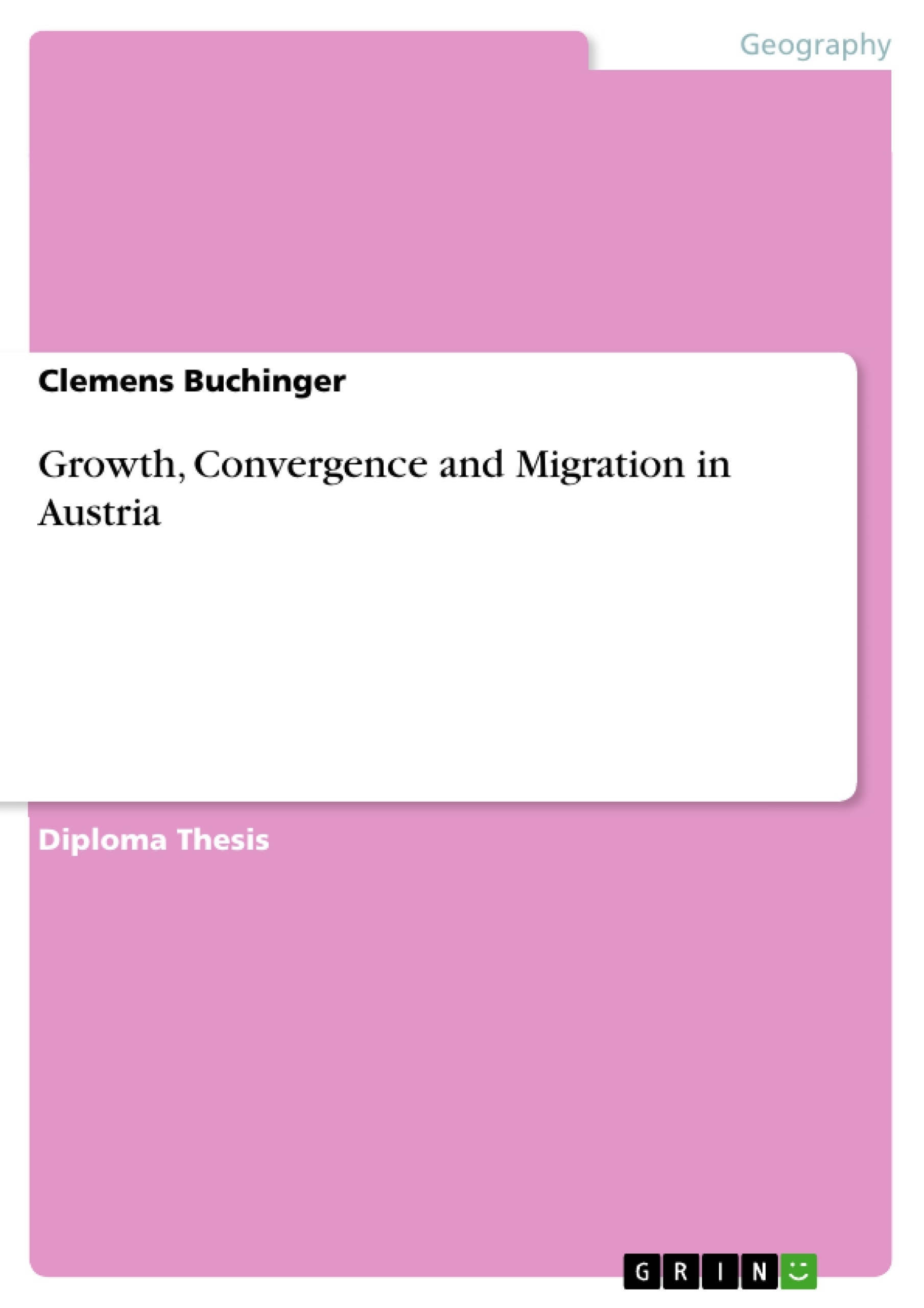The aim of this study is to investigate whether migration affects Austrian economic growth. Migration is seperated into total and foreign migration. The framework of this analysis is the Neoclassical Solow-Swan model. Analogous to the main results of this model, the two types of – convergence and an augmented version of the model regarding the two migration variables will be tested.
The empirical work is based on a data set especially created for Austria, which covers the time period from 1961 to 2002. This data set provides a clear tendency towards absolute convergence. The test of conditional convergence verifies that the Austrian federal states started at different technological status and converge at a speed of 3, 54% per year. Furthermore, this test points out that the Solow-Swan models findings are not asserted, but some of the variables help to improve the results of the test.
The augmented model, which includes the migration variables, leads to the conclusion, that total migration in Austria has a positive and highly significant influence on the growth of GDP per capita, while foreign migration also suggests the positive relationship but only at a 10% level of significance.
Inhaltsverzeichnis (Table of Contents)
- Abstract
- 1. Introduction
- 2. The Solow-Swan model of economic growth
- 2.1. B-Convergence in the Solow-Swan model
- 2.1.1. The theory of absolute and conditional ẞ-convergence
- 2.1.2. The speed of convergence
- 2.1. B-Convergence in the Solow-Swan model
- 3. Data
- 3.1. Gross Domestic Product
- 3.2. Savings Rate
- 3.3. Labor Force
- 3.4. Migration
- 4. Results
- 4.1. Absolute ẞ-convergence.
- 4.2. Conditional convergence
- 4.3. Migration and convergence
- 5. Conclusions
Zielsetzung und Themenschwerpunkte (Objectives and Key Themes)
This study aims to investigate the impact of migration on Austria's economic growth, specifically focusing on the relationship between migration and GDP per capita growth. The study employs the Neoclassical Solow-Swan model as its theoretical framework, examining both absolute and conditional convergence and the influence of migration on these processes. Key themes include:- The relationship between migration and economic growth in Austria
- The application of the Solow-Swan model to analyze convergence and the role of migration
- The empirical analysis of absolute and conditional convergence in Austria
- The influence of total and foreign migration on GDP per capita growth
- The identification of potential factors contributing to the convergence of Austrian federal states
Zusammenfassung der Kapitel (Chapter Summaries)
- Chapter 1: Introduction This chapter sets the stage by introducing the research question, which focuses on analyzing the impact of migration on GDP per capita growth in Austria. The chapter provides a brief historical overview of migration trends in Austria, highlighting the significant waves of immigration and emigration experienced by the country. It emphasizes the limited theoretical and empirical work exploring migration's influence on economic growth, particularly in the context of the Solow-Swan model.
- Chapter 2: The Solow-Swan Model of Economic Growth This chapter delves into the theoretical foundation of the study, outlining the Solow-Swan model of economic growth. It focuses on the concept of B-convergence within this model and its implications for understanding the relationship between economic growth and convergence. The chapter elaborates on the theory of absolute and conditional B-convergence and discusses the speed of convergence.
- Chapter 3: Data This chapter details the data used for the empirical analysis. It covers the sources and variables included in the dataset, which spans the period from 1961 to 2002. Specific attention is given to the variables related to Gross Domestic Product, Savings Rate, Labor Force, and Migration.
- Chapter 4: Results This chapter presents the results of the empirical analysis. It examines the evidence for absolute B-convergence, conditional convergence, and the influence of migration on these processes. The findings are discussed in relation to the Solow-Swan model and its implications for understanding the impact of migration on Austrian economic growth.
Schlüsselwörter (Keywords)
This study focuses on the intersection of migration and economic growth, specifically in the Austrian context. Key terms include: migration, economic growth, GDP per capita, Solow-Swan model, B-convergence, absolute convergence, conditional convergence, Austria. The empirical work is based on a dataset covering the time period from 1961 to 2002, exploring the relationship between migration and economic growth through the lens of convergence analysis.- Quote paper
- Clemens Buchinger (Author), 2006, Growth, Convergence and Migration in Austria, Munich, GRIN Verlag, https://www.grin.com/document/288616



